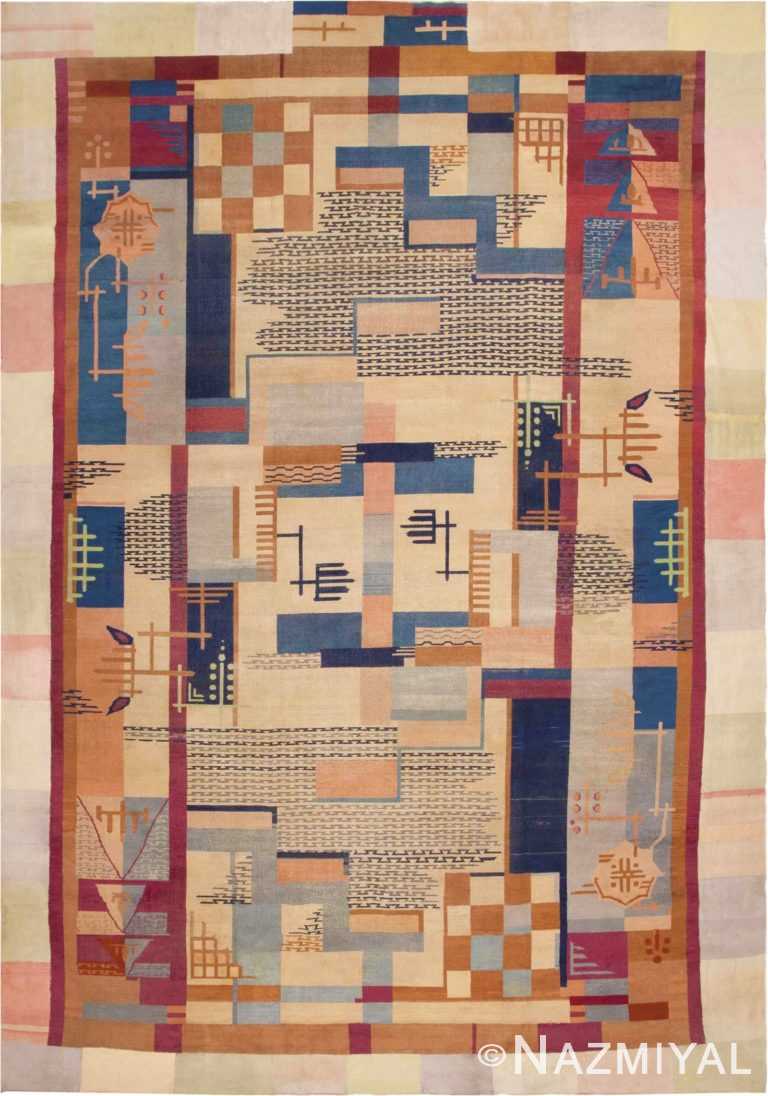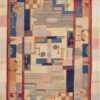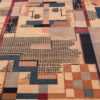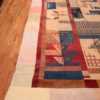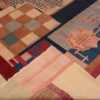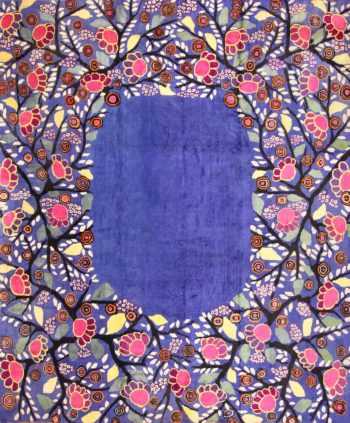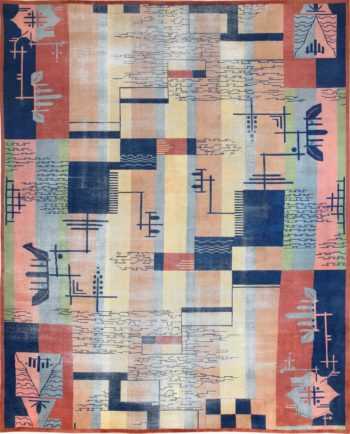Large Size Antique Indian Art Deco Design Area Rug 44979
$120,000.00
Layered patterns, geometric motifs, abstract compartments and saturated jewel tones are combined in this lively and artfully composed Art Deco rug from India.
Impressive Large Size Antique Art Deco Design Area Rug, This Antique Rugs Was Woven In: India, Date It Was Created: Early 20th Century – Woven in India, this motley Art Deco vintage rug features a complex variety of patterns that create a harmonious layered composition. Continuous lines create constant movement as they traverse the field superseding the intricate patterns that add interest to the motley background.
Checkerboard details, geometric compartments, botanical motifs, decorative trellises and trailing dovetail lines with staggered edges create a meandering allover pattern that is augmented by ogival medallions, prominent fixtures and a variety of small-scale patterns. Abstract compartments with strong lines and clear edges divide the field into manageable sections that are decorated according to the central theme. The layered composition and abstract motifs create a lively patchwork effect that is continued in the pastel borders, which feature plaid compartments and colorful blocks.
This piece was woven using two different techniques – the center of the rug has pile but the border was woven as Dhurrie rug weave (flat weave). This combination of textures is extremely unique and adds such a level of sophistication that is rarely seen in the antique rug world.
The Art Deco period was a well-established movement long before the 1925 Exposition Internationale des Arts Décoratifs et Industriels Modernes in Paris France. The name was later shortened to the term Art Deco, with which we are most familiar today. The purpose of the exhibition was not solely for the sake of art, it was to reestablish France’s position as a leader in the art and design fields.
Nearly 16 million people visited the exhibition in the seven months that it ran. This allowed France to establish itself once again as a leader in the category of luxury goods. One of the rules of the exhibition was that all items must be completely modern with no reflection of historical art styles. However, many of the items still reflected influences from the past, despite this rule.
This antique rug would make a bright foundation for any room design. Its colors will reflect the light in the room and make it appear more spacious. It could easily set the tone for a more traditional room, or for a Boho chic one, too. This is a magnificent piece and a rare find for the Art Deco collector.

